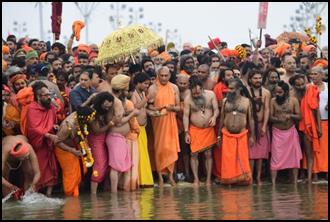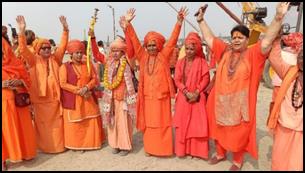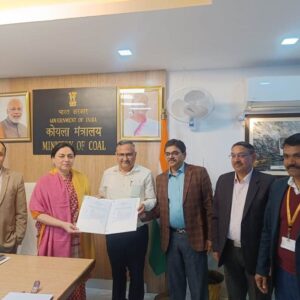
TFP Bureau, Prayagraj, January 22, 2025: The Akharas have long been central to the Maha Kumbh, embodying the deep spiritual and cultural traditions of Sanatan Dharma. As the spiritual heart of the event, these religious orders trace their origins to the time of Adi Guru Shankaracharya in the 6th century, and continue to play a pivotal role in shaping the Kumbh Mela experience, drawing millions of devotees from around the world.
Role of Akharas in Spiritual and Physical Training
The Akharas are not just places of worship but also centers of spiritual learning and physical training. Founded to blend spiritual study with martial arts for physical defense, these institutions uphold their dual mission, even as they evolve with the times. The Mahamandaleshwaras, the revered leaders of the Akharas, ensure the continuation of spiritual and organizational traditions while leading grand processions and rituals that define the Kumbh.
Shaiva, Vaishnav, and Udaseen Akharas at the Forefront
Among the 13 Akharas, the Shaiva, Vaishnav, and Udaseen sects stand out for their rich spiritual practices. The Shaiva Akharas, particularly the Naga Sannyasis of Juna Akhara, are integral to the Kumbh’s grand processions and rituals, known for their ascetic practices and martial prowess. The Juna Akhara, with its large number of Naga Sannyasis, remains a major spiritual force at the event.
Historically significant, the Shri Panch Dashnam Aavahan Akhara, which has been part of the Kumbh Mela for over 1,200 years, continues to preserve ancient rituals like the Chhari Yatra, reinforcing the enduring legacy of the Akharas in maintaining spiritual heritage.
Gender Empowerment at the Maha Kumbh
In a groundbreaking move, the Maha Kumbh 2025 will see the initiation of over 1,000 women into prominent Akharas, including scholars like Radhenand Bharti. This marks a significant shift in the traditionally male-dominated space, with Akharas such as Shri Panchadashnam Juna Akhara leading the way by initiating over 200 women into Sannyas.
The presence of women Mahamandaleshwars, including figures like Sadhvi Geeta Bharti from the Maha Nirvani Akhara, highlights the growing recognition of women’s leadership roles in the spiritual domain.
Kinnar Akhara: A Step Toward Inclusivity
In another historic development, the Kumbh 2025 will feature the participation of the Kinnar Akhara, a welcoming space for the Kinnar community, traditionally marginalized in Indian society. This inclusive move reflects the Kumbh’s broader commitment to equality and respect, allowing the Kinnar community to engage in spiritual practices alongside other sects of Sanatan Dharma.
Environmental and Social Responsibility
In addition to its focus on gender equality, the Maha Nirvani Akhara is also at the forefront of environmental conservation, reflecting the Akhara’s commitment to social and spiritual responsibility. This growing awareness aligns with the Kumbh’s role as a spiritual gathering that embraces sustainability, integrating environmental consciousness into its rituals.
As the Maha Kumbh 2025 unfolds, the Akharas remain at its spiritual core, adapting to contemporary needs while preserving their timeless traditions. The participation of women, the Kinnar community, and the increased focus on environmental stewardship all point to a broader, more inclusive vision of Sanatan Dharma, one that continues to inspire millions of devotees seeking a deeper connection with the divine and with each other







